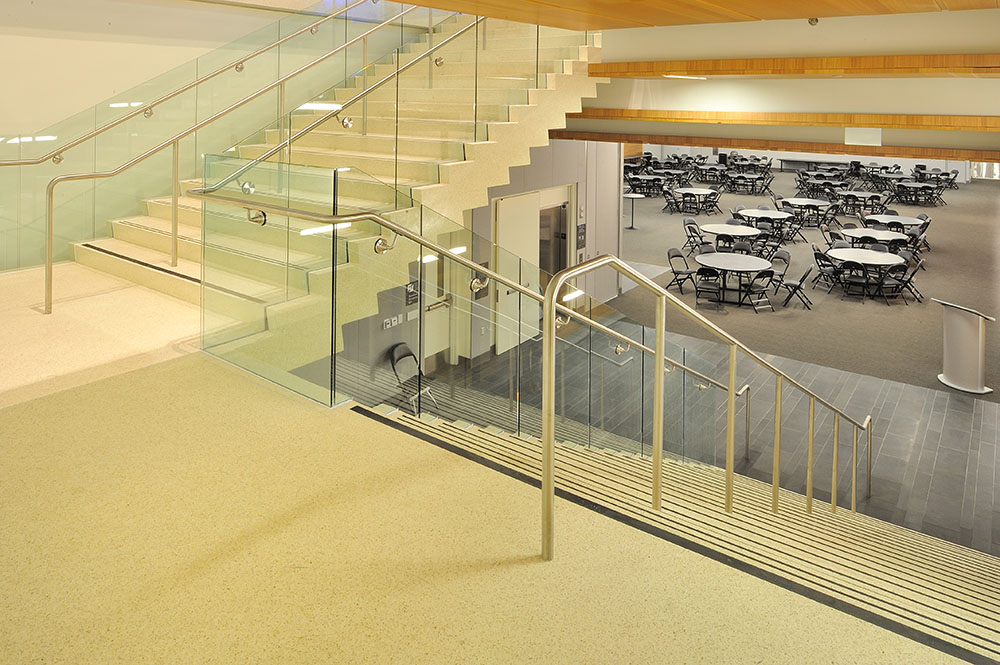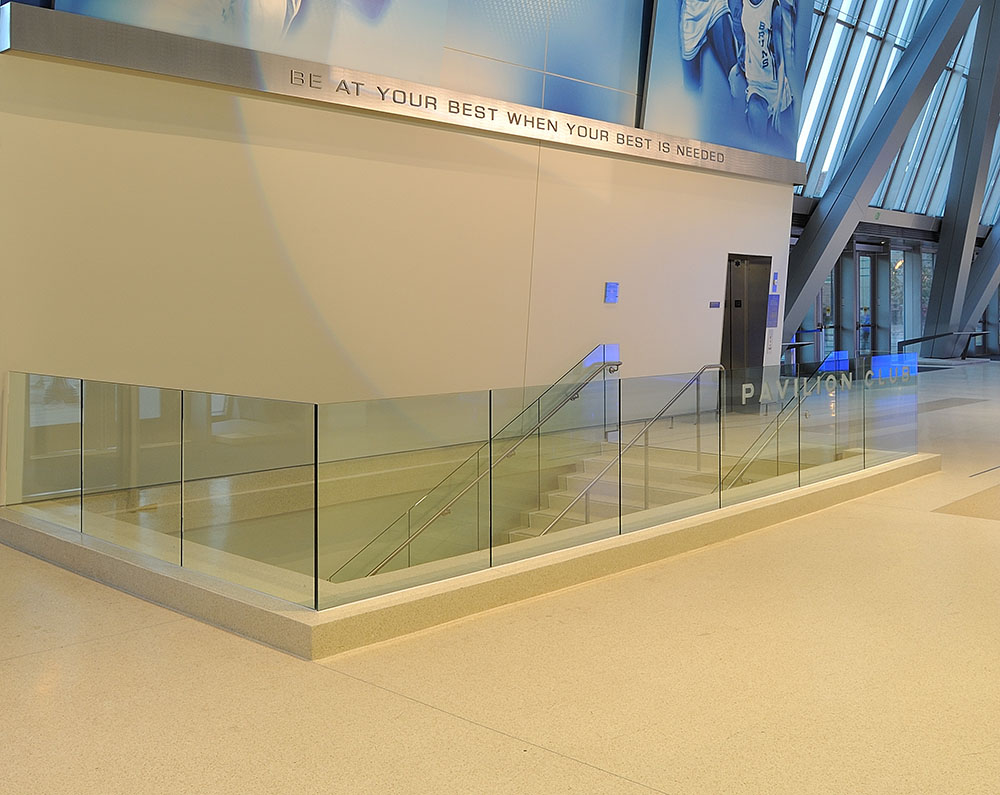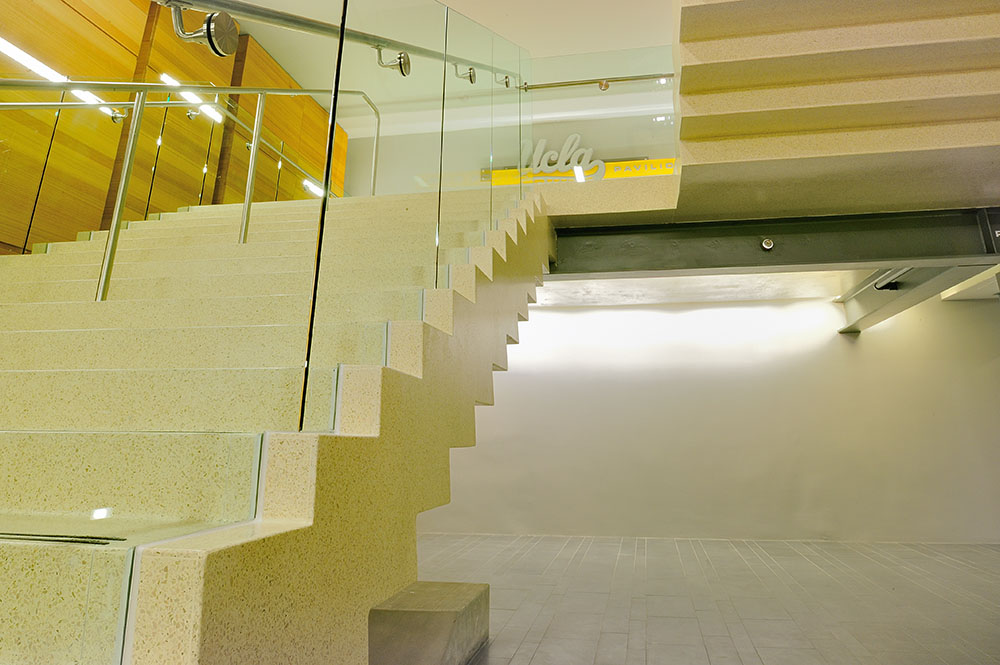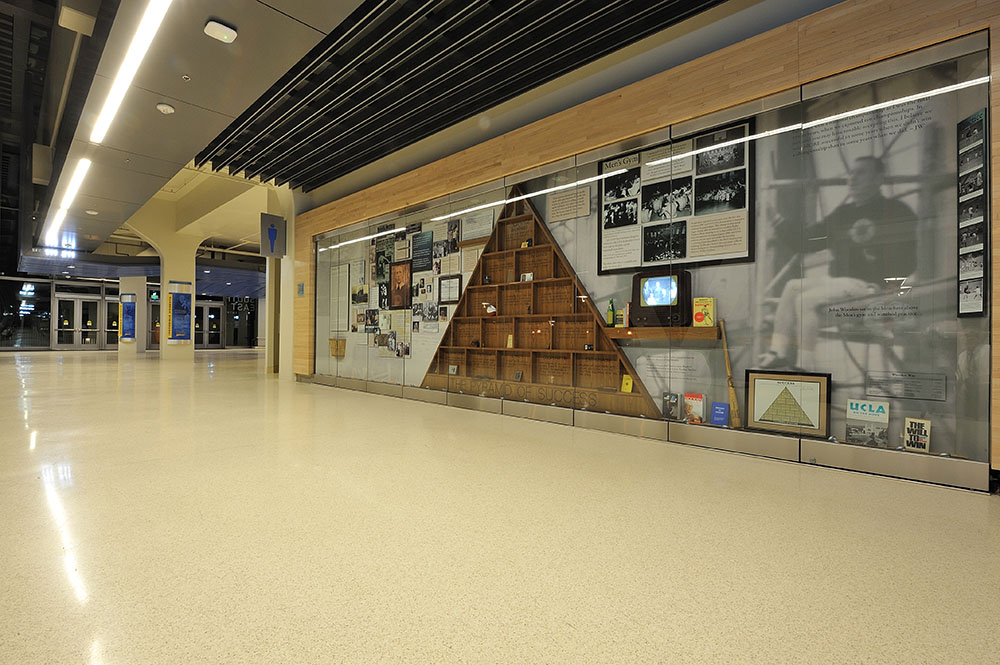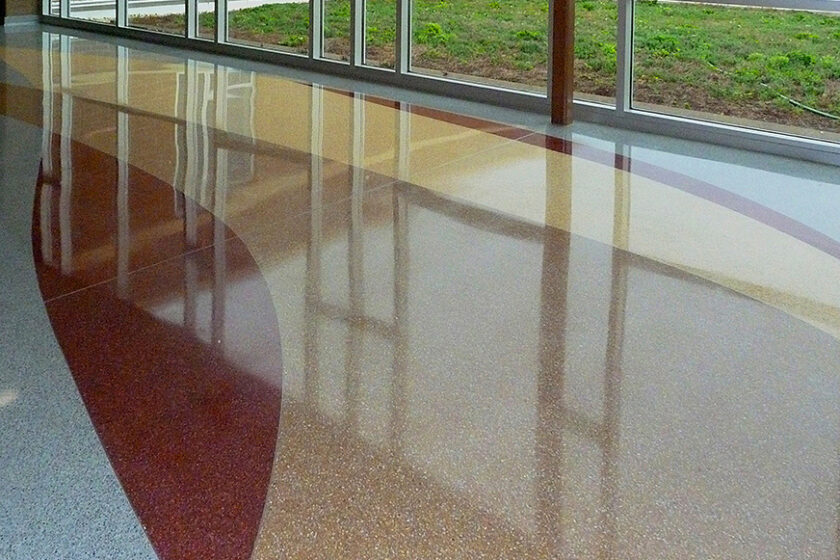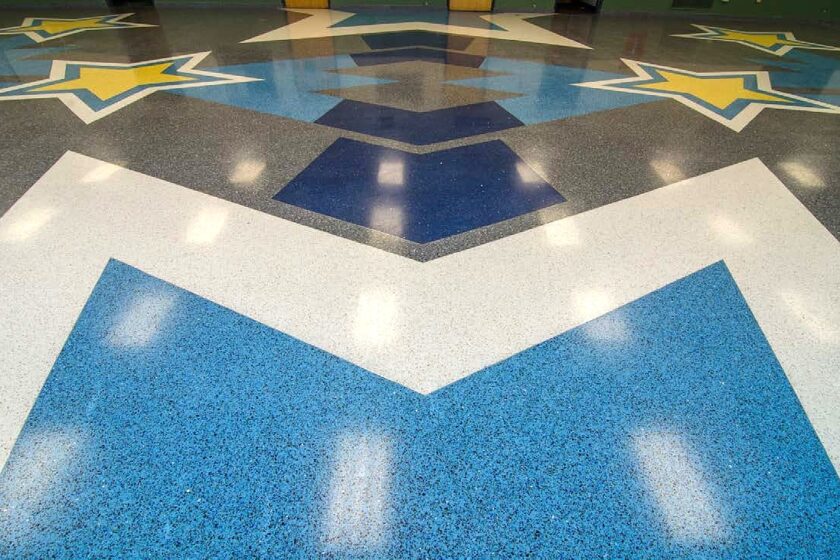Terrazzo's Role in Resilient Construction
In November 2012, UCLA completed a LEED-certified modernization of its Pauley Pavilion. Around 70,000 square feet of epoxy terrazzo floors, including a floating zigzag terrazzo staircase, were installed for the renovation and expansion. The terrazzo installation served as a central aesthetic and functional component of the project. It earned a National Terrazzo & Mosaic Association (NTMA) Honor Award in 2013 for Top End Constructors of Sun Valley, California.
Then, in July 2014, an aging water main burst nearby, unleashing millions of gallons of water onto the UCLA campus, including Pauley Pavilion, causing widespread damage. The aftermath of the UCLA water main break highlights how selecting the right materials can drastically minimize recovery costs and downtime after a disaster.
The arena’s wooden basketball court required total replacement, and the carpet from flooded buildings had to be stripped. Nearly 1,000 vehicles were damaged or destroyed, and countless resources were spent on remediation and repairs.
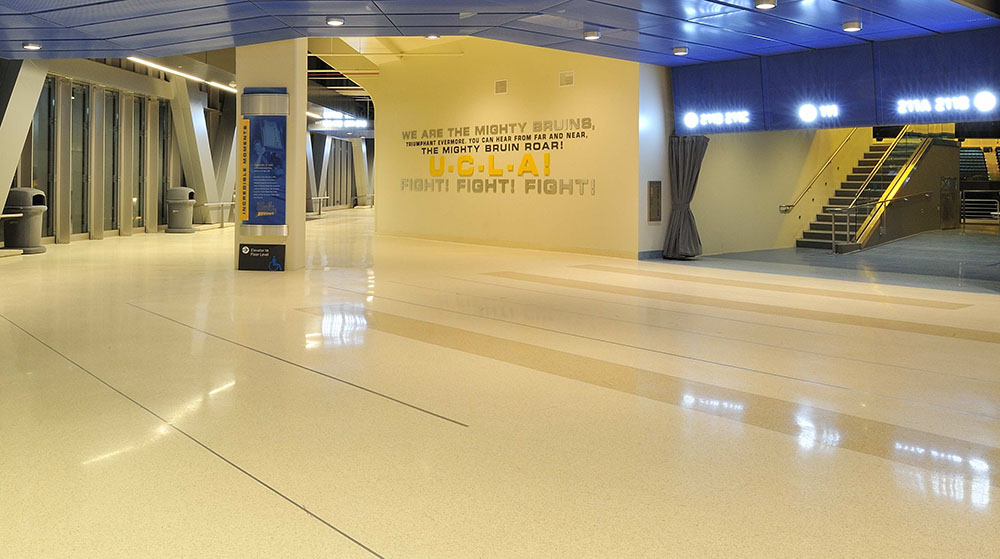
However, the terrazzo at Pauley emerged nearly unscathed, requiring only a repolish to restore it to like-new condition. This outstanding capacity to withstand such devastation demonstrates terrazzo’s value as a resilient building material that reduces loss and contributes to long-term sustainability. Terrazzo’s long lifespan—often several decades or more—means fewer replacements and repairs and a lower environmental impact, whether or not it is exposed to extreme conditions.
In the face of natural and infrastructure-related disasters, the National Institute for Building Sciences (NIBS) advocates using such climate-resilient building materials. Their construction standards reduce waste, conserve resources, and improve sustainability in the built environment. NIBS research shows that for every $1 invested in disaster mitigation aligned with the latest building codes, between $6 and $11 can be saved in future disaster-related costs.

NIBS also emphasizes the value of materials that require minimal maintenance, particularly in post-disaster scenarios. Terrazzo’s seamless, non-porous surface is easy to clean and maintain. At the same time, it resists mold growth, water penetration, and damage, even after exposure to exceptional environmental stresses such as water, dirt, and debris.
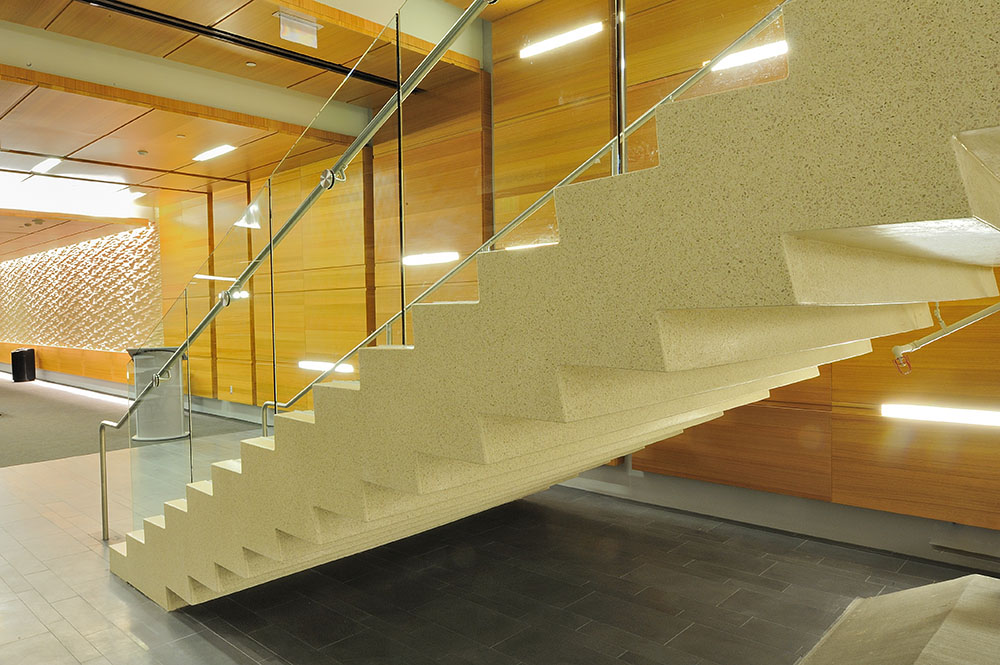
Terrazzo’s performance in the Pauley Pavilion renovation exemplifies its resilience against severe environmental challenges. By investing in resilient materials like terrazzo, facilities can significantly mitigate disaster-related damages while reducing long-term repair costs and improving sustainability both in normal and catastrophic circumstances.
